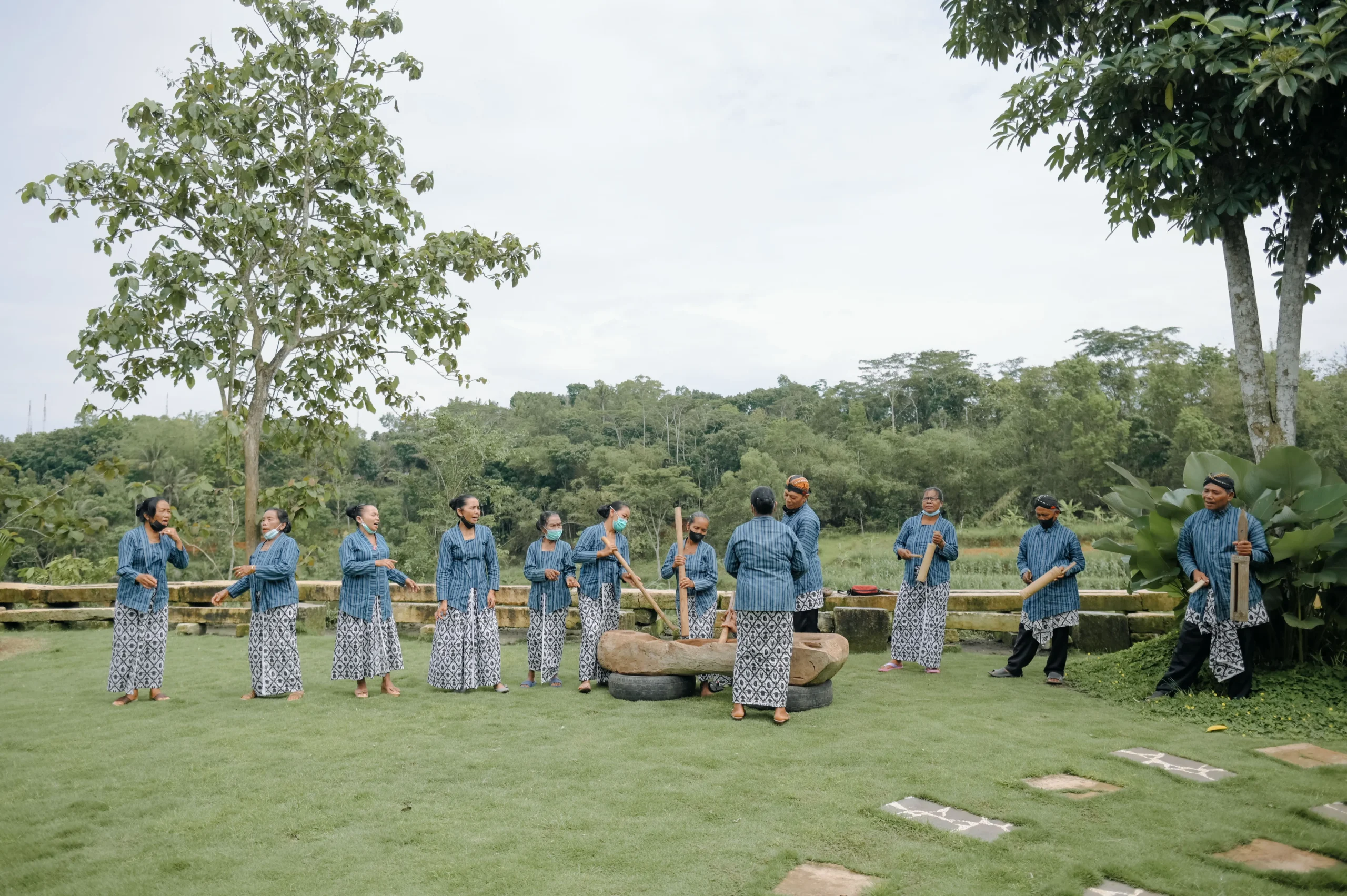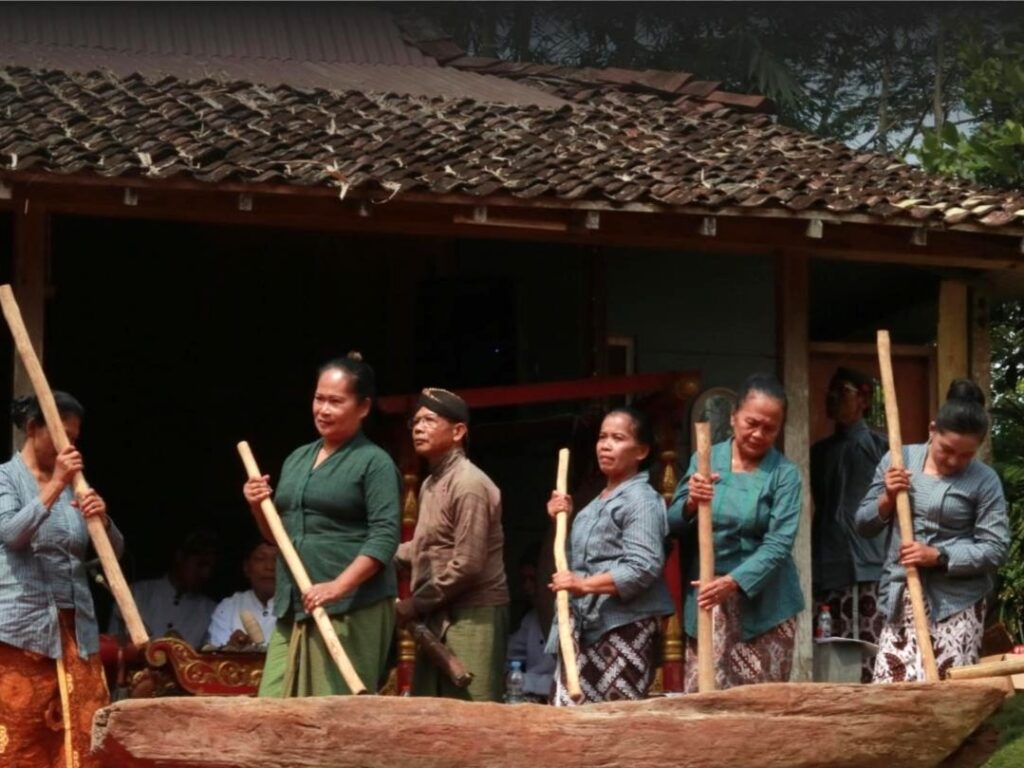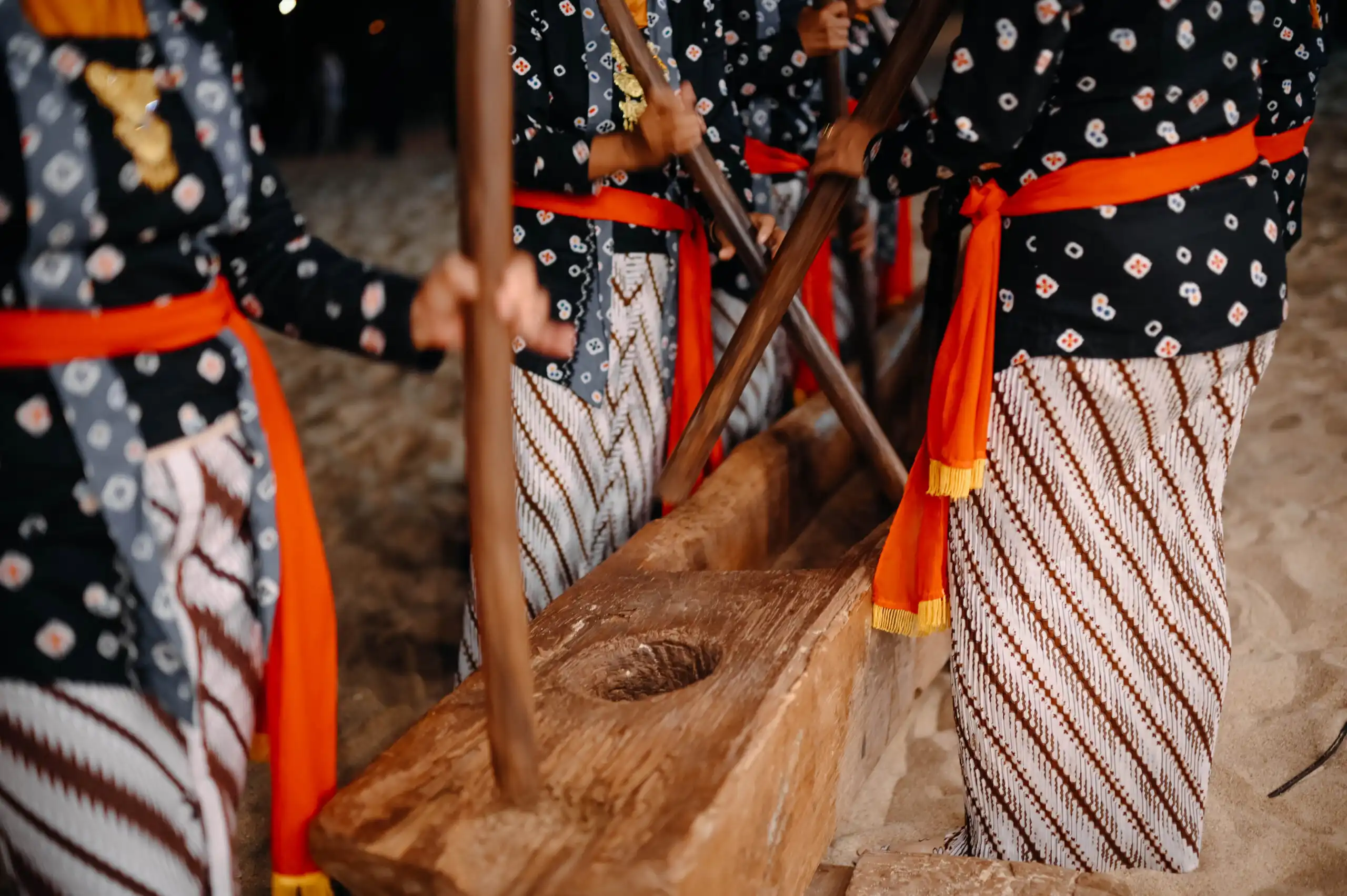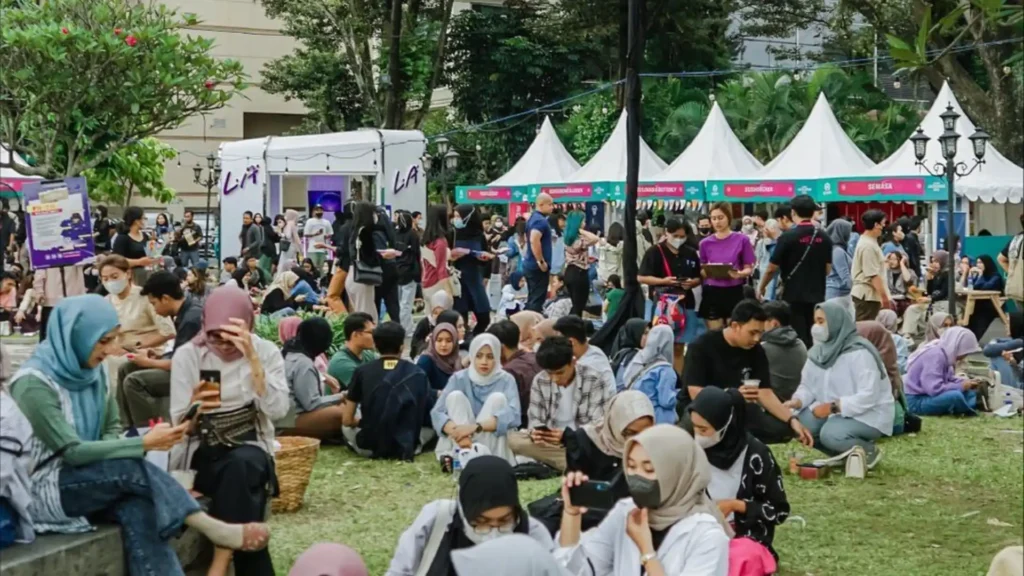Yogyakarta is known for its strong cultural roots, ancient temples, and royal traditions. But beyond the well-known batik and gamelan music, there’s a lesser-known tradition that’s just as captivating, gejog lesung. This old Javanese tradition is not just about pounding rice, it’s a cultural expression that transforms daily chores into beautiful communal music.
Originally practiced by villagers after the harvest, gejog lesung showcases the heart of Javanese values, togetherness, gratitude, and rhythm. Let’s explore how this unique music tradition is keeping the spirit of heritage alive in Yogyakarta.
Table of Contents
Get to Know About Gejog Lesung

The word Gejog means “to stomp or pound,” and lesung is a long wooden vessel used for pounding rice. Gejog Lesung began centuries ago in rural Java, including Yogyakarta, where people would gather after harvesting rice and use the lesung as a musical instrument.
Instead of using it just for work, they created rhythmic sounds by pounding in unison. Over time, it developed into a musical tradition. This tradition wasn’t only for fun, it had a deeper meaning. It was often done to express gratitude for a good harvest and to drive away bad spirits.
In some royal ceremonies of the Yogyakarta Palace (Kraton), even Abdi Dalem (palace servants) performed gejog lesung to honor the Sultan and sacred moments like Patehan, the Javanese tea ceremony. The use of Rampadan, a smaller tool similar to a pestle, added unique sounds and symbolic touches to the ritual.
Back in the day, Gejog Lesung could be heard frequently during the rice harvest season. But as time passed and modern rice-processing machines replaced traditional tools, the practice declined. Today, the tradition is preserved through cultural communities, museums, and festivals in Yogyakarta. Some villages still perform it during special events, but no longer as part of daily life.
Learn How to Play Gejog Lesung

If you’re curious and want to see gejog lesung in action, or even try it yourself, you can visit Kothekan Kendhali Roso Art Center, located in the heart of the city. This center is committed to preserving and promoting traditional bamboo music (kothekan) and gejog lesung as part of Yogyakarta’s rich cultural heritage.
For those interested in experiencing or studying gejog lesung more deeply, the Yogyakarta City Department of Culture is another helpful resource for information and event schedules. It also actively supports cultural tourism in the region by showcasing these traditional arts through performances and workshops.
Gejog lesung is more than just music, it’s a living symbol of community, culture, and history. From the rice fields of the past to the cultural stages of today, this tradition continues to enchant both locals and visitors.
Whether you’re a culture enthusiast or simply curious about Javanese traditions, witnessing or joining a gejog lesung performance is a must-do when visiting Yogyakarta. Keep the spirit of heritage alive by exploring traditional music like gejog lesung. It’s a fun, meaningful, and memorable way to connect with the heart of Yogyakarta.






